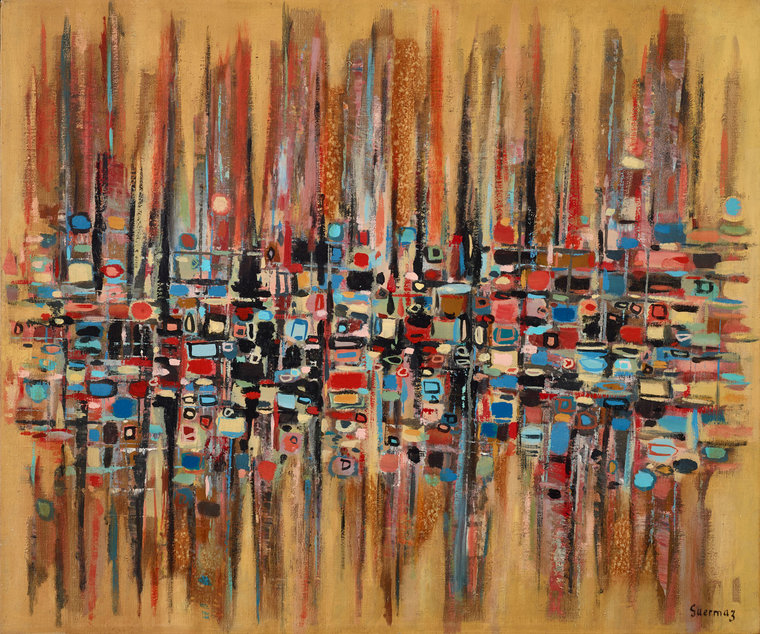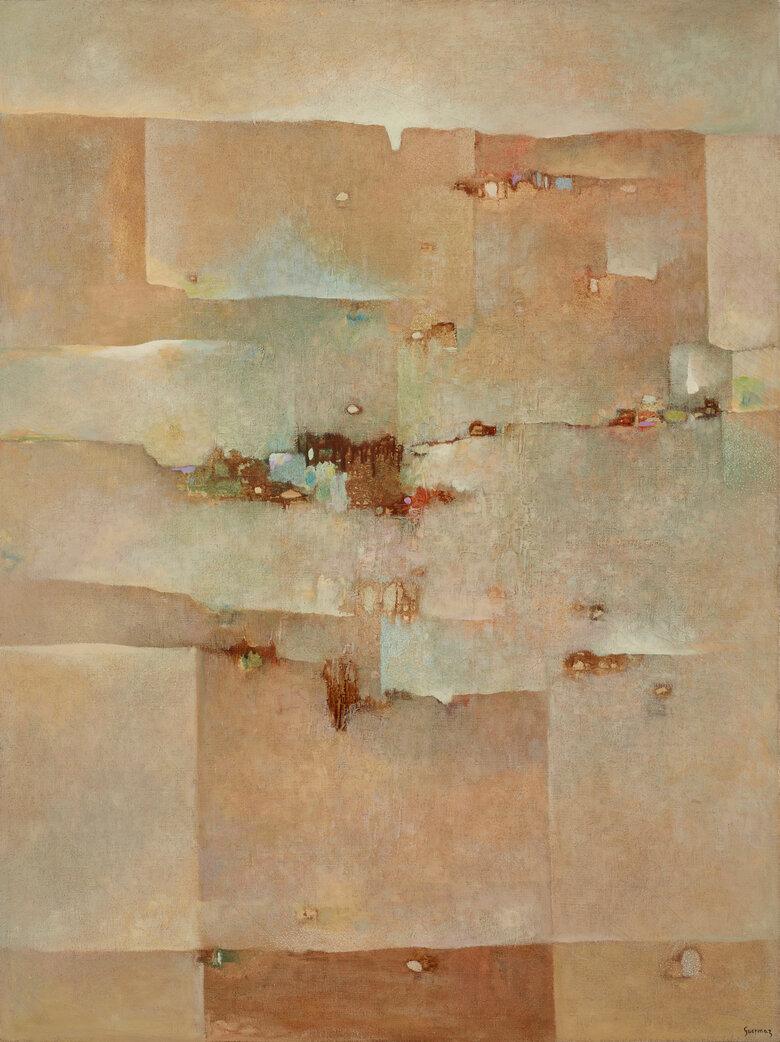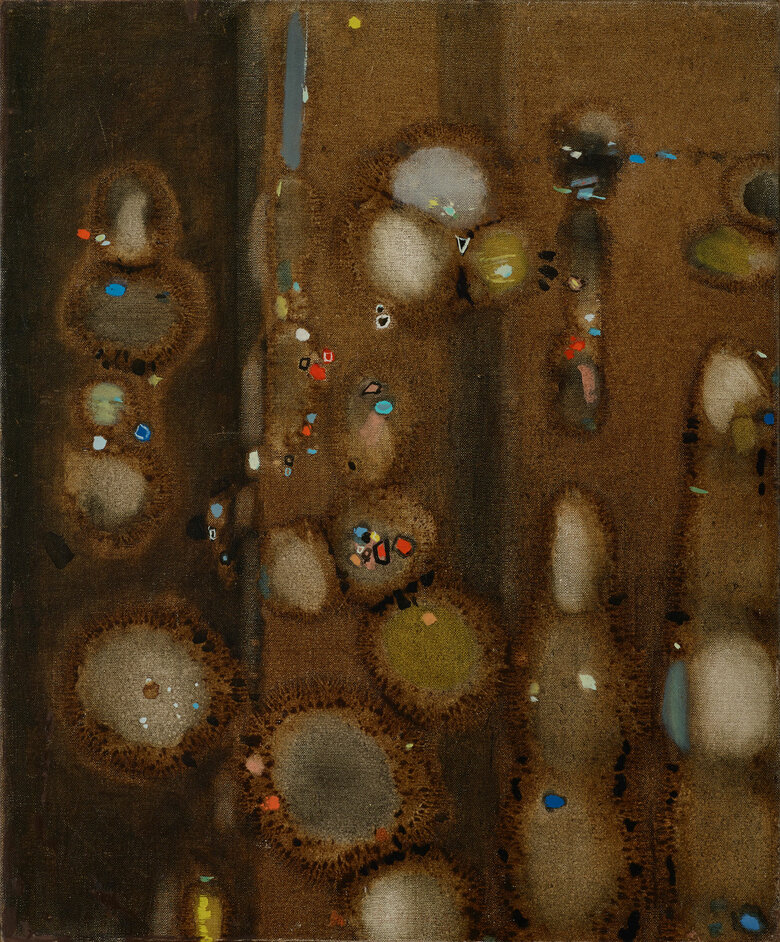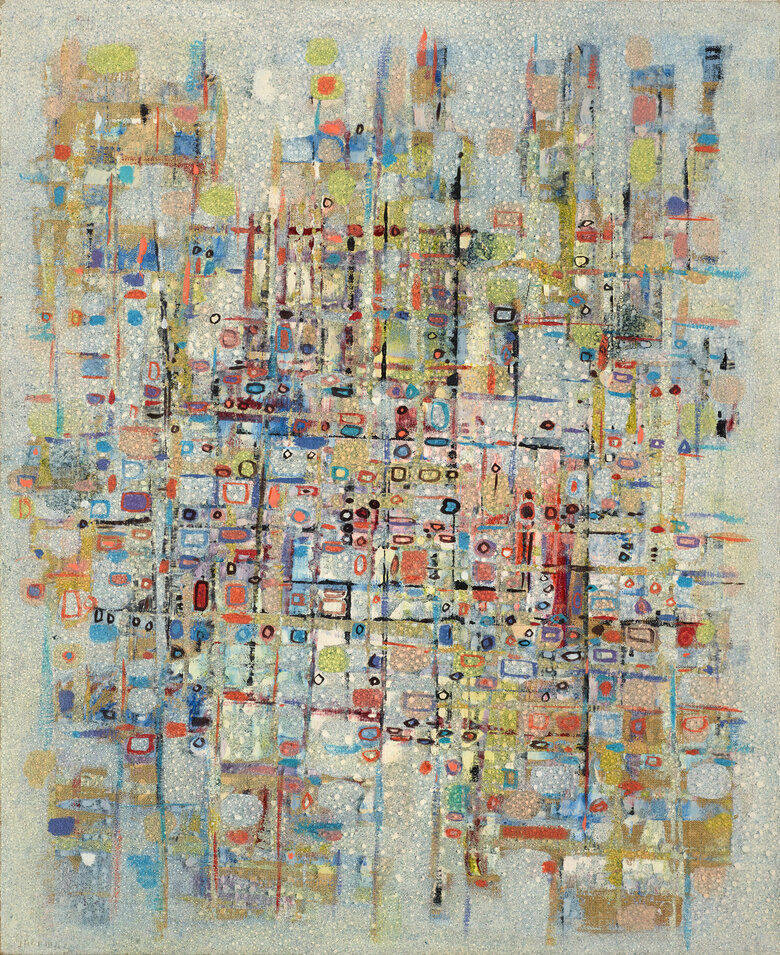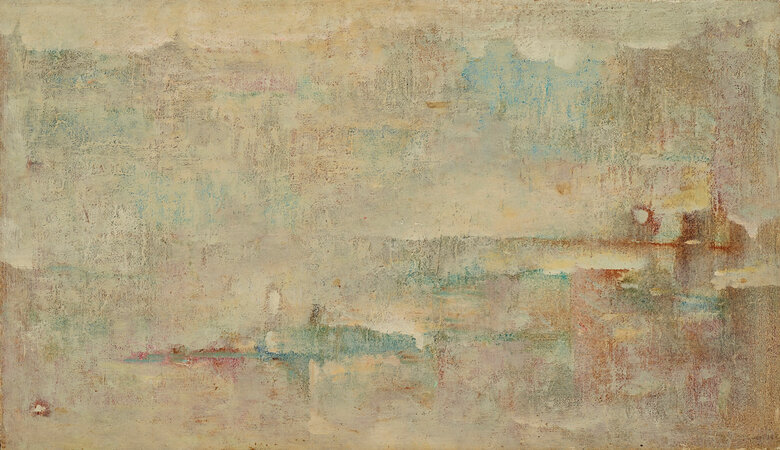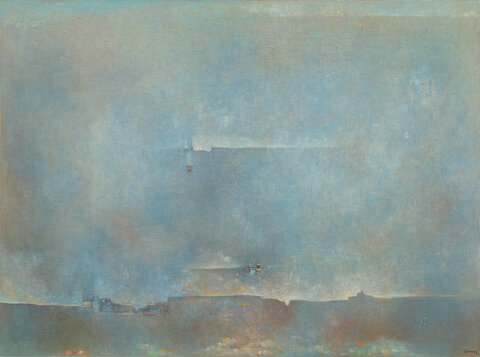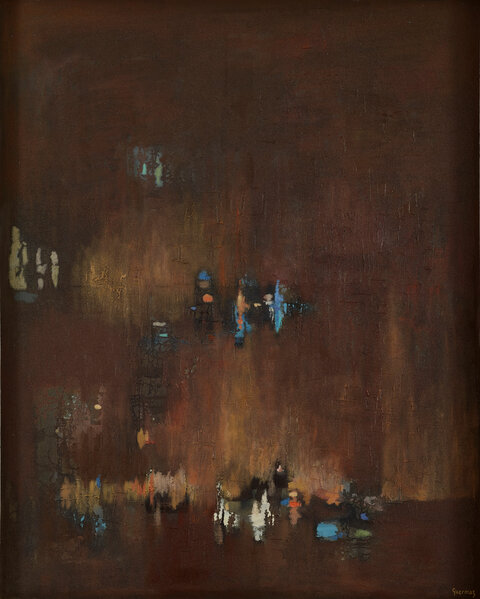Untitled, 1963, is one of several paintings, in oil on canvas, by Abdelkader Guermaz that reveals an exciting transitionary period between his earlier traditionally figurative style and his future purely abstract compositions. The canvas is carefully treated – a crucial step in Guermaz's preparation[1]– with an ochre base that is then sparingly used again during the final layers to accentuate the ombre effect leading up to the edges of the painting. The ochre comes through the black grid as fractures of light amid the ‘windows’[2]. Thus, the cooler colors – the various shades of vibrant blues – appear as though they sit within the grid instead of layered on top of it. The warm tones, such as the reds, yellows, and oranges, further revive the blues and, in the process, grant the painting the necessary harmony to unify it. This effect grounds the black grid and blotches of paint as a natural part of the world. They seem possibly an object being represented within the canvas, while the fading horizontal lines at both ends suggest a perpetuity through which the grid and light become diluted.
One reference that Guermaz continuously returned to when discussing his paintings was music and his fascination with how a few simple notes in the right moment and the right place have the capacity to create musical harmony[3]. It is this same unifying motif that Guermaz constantly strove to elicit in his works through his deliberate choice of color, his fastidiousness with the canvas at hand, and his assiduous belief in the potential of abstract art. Untitled, 1963 reflects the painter’s attentiveness to nuance and validates his characterization as the poet of abstraction and color.[4]
The early 1960s were an essential period for Guermaz’s artistic journey. Between 1963 and 1964, Guermaz's paintings were exhibited in various exhibitions and museums in Algiers and Paris, along with the works of fellow Algerian abstract artists such as Abdallah Benanteur and Mohammed Khedda.[5]
The move away from figurative painting at the time was understood by some Algerian artists as an intuitive step since the prevalent North African non-figurative art already naturally favored the abstract[6]. It was during this time, when Guermaz had settled in Paris that he came in direct contact with the French and émigré artists (such as Jean-Jaques Morvan, Jean Le Moal, Roger Bissière, Maria Helena Vieira da Silva, etc.[7]) who would come to loosely form what would be called the ‘Second New School of Paris [8]. His engagement with this Parisian art scene seems to have invigorated Guermaz and allowed him to develop his dedication to abstraction on his own terms beyond the confines of nationalistic references[9].
Guermaz is one of the founding figures of the Algerian Abstract movement and is best known for the works he completed during the 1960s and 1970s. These aforementioned pieces consist of canvases meticulously covered in sheens of layered light, striking in their choice of minimal colors and the meditative state they inspire. This is why paintings from the late 1950s and early 1960s, like Untitled, 1963 with its exhilarating vibrancy, are important to explore in Guermaz’s abstract works repertoire: they highlight his artistic evolution and the development of his unique perspective.
Sources:
[1]Abdelkader Guermaz, "Entretien avec Guermaz," interview by Irmelin Hossmann, n.d., accessed July 10, 2023, www.guermazcatalogueraisonne.com. Guermaz credits his time at the Ecole des Beaux-Arts for his detailed attention to canvas preparation.
[2]Michel-Georges Bernard, “Guermaz, Voyage au Pays de la Lumière,” Algérie, Littérature, Action, no. 49-50 (March-April 2001): 148-153, accessed from www.guermazcatalogueraisonne.com
[3]Les amis de Guermaz
[4]Abdelkader Guermaz, “Poète de l’abstrait,” interview by Christophe Chelten, n.d, accessed July 10, 2023, www.guermazcatalogueraisonne.com
[5]Bernard, 148-153.
[6]Bernard, 148-153.
[7]Pierre Rey, “Retrouver Guermaz,” Algérie, Littérature, Action, no. 49-50 (March-April 2001): 137-143, accessed from www.guermazcatalogueraisonne.com
[8]Emma Crichton-Miller, “The Fall and Rise of the Second School of Paris,” Apollo Magazine, June 7, 2016, accessed from www.apollo-magazine.com, Second New School of Paris or Nouvelle École de Paris artists were opposed to geometric abstraction, and explored works that came to be labeled as lyrical abstraction, taschism, and art informel.
[9]Les amis de Guermaz, “Guermaz, Peintre du Silence et de la Lumière,” October 31, 2016. www.youtube.com. In the video description, Guermaz is described as one of the masters of the Second New School of Paris.
Signed "Guermaz" on the lower left front

